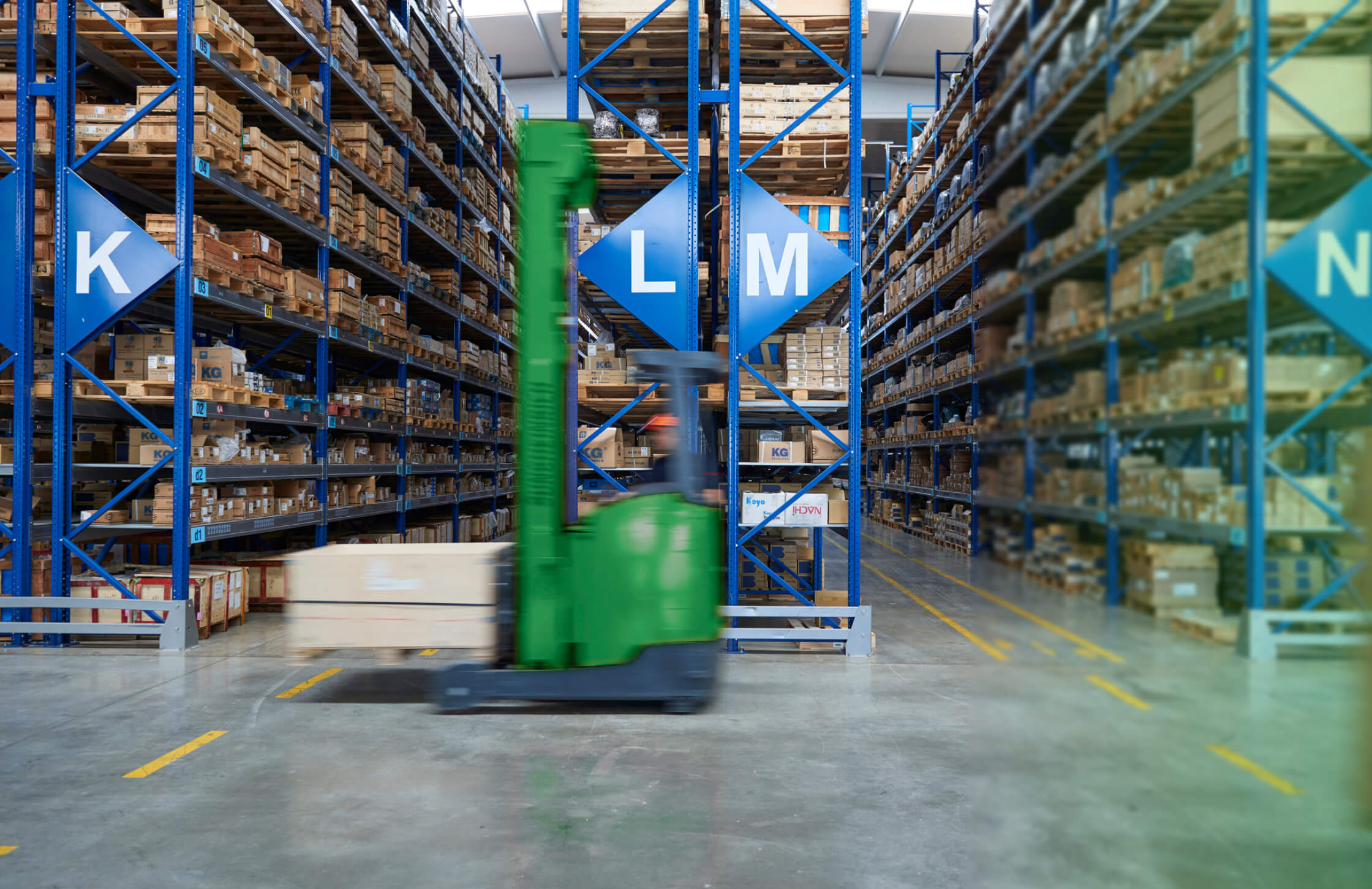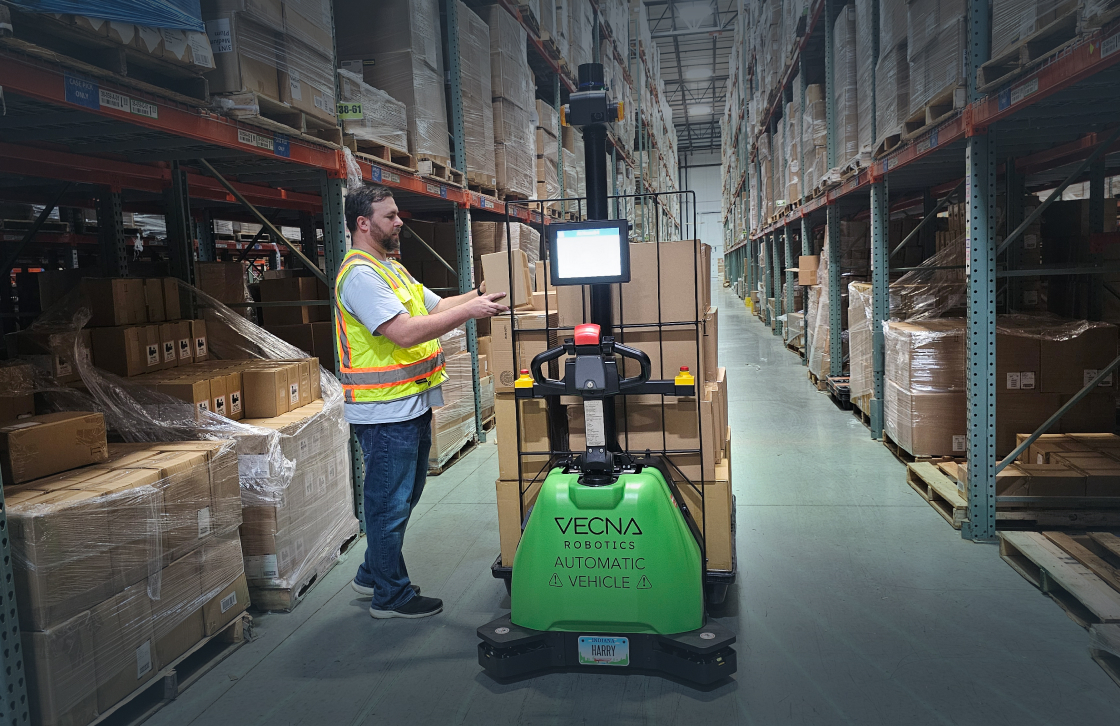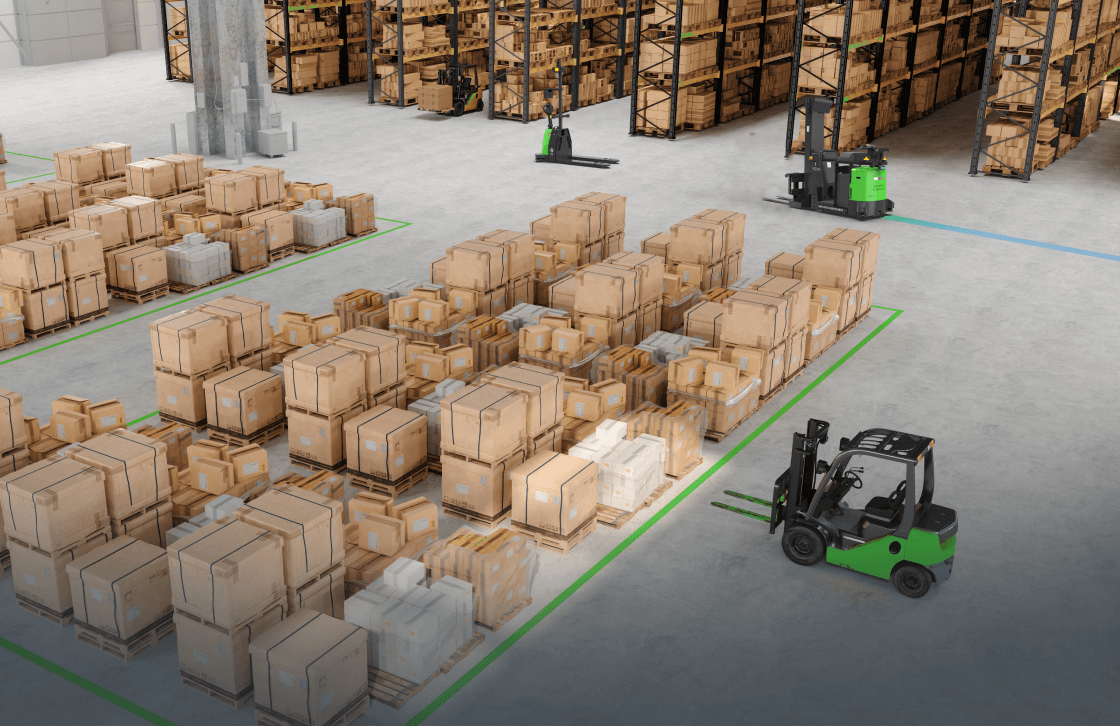In an era where efficiency, speed, and adaptability have become the lifeblood of global commerce, the role of warehouses in shaping the future of trade and retail cannot be understated.
As we stand on the threshold of 2024, the fusion of innovative technologies with traditional warehousing practices has birthed a revolution in logistics management. From the swift embrace of artificial intelligence to the widespread adoption of robotic process automation, warehouses are no longer just static structures to store goods; they have metamorphosed into dynamic hubs of innovation.
These changes are not just about enhancing speed or reducing operational costs—they are about reimagining the very essence of warehousing in response to evolving market demands and environmental imperatives. As businesses grapple with these shifts, understanding the top automation ideas becomes not just beneficial, but essential. Dive with us as we unravel the top ten warehouse automation ideas for 2023, illuminating pathways for businesses to achieve unparalleled operational excellence.
There are several factors that are driving the most recent push toward rapid innovation. They are:
- Increased efficiency and the rise of e-commerce: As e-commerce continues to grow, it’s transformed the way we shop, placing enormous pressure on warehouses to deliver products swiftly. Consumers’ expectation for prompt deliveries means warehouses cannot afford delays or inefficiencies. Automation steps in as the game-changer here. By leveraging automation, warehouses can streamline processes, limit manual interventions, and minimize mistakes, leading to quicker order processing and dispatch. As a result, customers get their products faster, ensuring higher satisfaction rates and repeated business.
- Cost-reduction: One of the most tangible benefits of automation is the substantial cost savings it offers. Labor, often one of the most significant expenses in warehouse operations, can be significantly reduced with automation. But beyond labor, automated systems, through their precision and reliability, can drastically cut down errors in order processing, inventory management, and shipping. Fewer errors mean fewer returns, fewer compensations, and fewer reputational risks—all translating to cost savings.
- Improved scalability: Modern businesses need to be agile, ready to scale up or pivot as market conditions change. Traditional warehousing systems, reliant heavily on manual processes, might struggle to scale up rapidly. Automation, however, provides the agility warehouses need. Whether it’s the holiday rush or an unexpected surge in demand, automated systems can handle increased loads without missing a beat, ensuring businesses don’t lose out on potential sales.
- Better safety: Warehouses can be hubs of frenetic activity, and unfortunately, this sometimes means accidents. Manual lifting, moving heavy loads, or even repetitive tasks can lead to injuries. Automated systems, from robotic arms to automated guided vehicles, not only reduce the dependency on manual labor but also bring down the risk of accidents. These systems are designed with safety in mind, ensuring that both the equipment and the people in the warehouse are protected.
- Advancements in technology: The future of warehousing is intertwined with advancements in technology. Artificial intelligence can predict demand, machine learning can optimize routes within the warehouse, and IoT ensures real-time tracking of goods. These technologies, once the stuff of science fiction, are now at the forefront of warehouse automation, providing insights, enhancing operations, and ensuring that the warehouse of the future is smarter than ever.
- E-commerce demand: E-commerce isn’t just about online shopping portals; it’s about a whole ecosystem that ensures products reach consumers promptly. As this ecosystem expands, warehouses become critical cogs in the machinery. By automating processes, warehouses can keep up with the rapid pace of e-commerce, ensuring that the last mile of product delivery is as efficient as the first.
- Urbanization: Urban areas, with their dense populations, are goldmines for businesses, but they also pose unique challenges. Narrow roads, congestion, and rapid demand fluctuations require warehouses to be on their toes. Automated systems can swiftly adapt to these challenges, ensuring that urban consumers get their products without delay.
- Sustainability: Today’s businesses aren’t judged only on their profitability but also on their eco-friendliness. Automation, by optimizing processes and reducing wastage, plays a pivotal role in creating sustainable warehouses. By cutting down on energy consumption, reducing waste, and optimizing transport routes, automated warehouses are leading the charge toward a greener, more sustainable future for commerce.
The hidden labor factors
In today’s challenging supply chain setting, besides supply complications that elevate the cost of manual labor through wage rate surges, the concealed expenses associated with this labor and its influence on efficiency are frequently underestimated, sometimes by up to 50%. Industries, particularly manufacturing and wholesale distribution, generally recognize the balance between manual labor and automation. However, they often overlook certain “hidden” elements when evaluating their business models. These elements, while diverse across industries and individual companies, can be outlined as:
Labor Resources: The ongoing challenge of sourcing adequate manpower remains a significant concern for many warehouses, even as several corporations are ready to significantly boost their wage offerings. As per the U.S. Bureau of Labor Statistics, there’s a gap of around 425,000 in warehousing and transport roles, with a projection of 5 million more roles needed in the upcoming five years. An IDC talent study recently revealed that 44% of enterprises considered labor as a primary challenge, and 33% claimed that shortages are adversely affecting their operational output. Consequently, these labor deficits decrease efficiency by about 10–15%.
Attrition Rates: Employee attrition remains an overlooked expense associated with a labor-centric warehouse approach, especially in times when recruitment proves difficult. Considering the heightened demand in warehouse operations, workers often face extended shifts and tremendous pressure to meet escalating demands. The physically demanding nature of warehouse tasks, coupled with an older workforce nearing retirement, contributes to heightened attrition levels. The most recent data from the U.S. Bureau of Labor Statistics indicates an annual attrition rate of 43% in warehouse roles. IDC approximates that this attrition translates to a drop in productivity between 10–15%.
Warehouse automation solutions
In light of recent labor shortages and supply chain disruptions, there’s been a heightened emphasis on the necessity to enhance efficiency, curtail expenses, boost scalability, elevate safety standards, and align with the growing trends of e-commerce and sustainable development. These challenges are propelling swift innovations in warehouse automation. Here’s a compilation of the top ten automation technologies being widely implemented today, aimed at helping warehouses adapt to the evolving operational dynamics:
- Autonomous mobile robots (AMRs): Autonomous mobile robots are rapidly emerging as indispensable tools. These self-navigating robots are technologically equipped to traverse the expanse of large warehouses and execute essential tasks. These tasks range from picking and packing goods and transporting materials across vast spaces to more complex jobs like loading and unloading trucks. Another interesting facet of these robots is their ability to integrate seamlessly with various warehouse automation ideas systems, such as the sophisticated conveyors and the increasingly essential automated storage and retrieval systems, making the workflow much more streamlined.
- 3D vision systems: 3D vision systems are becoming increasingly popular in warehouse automation. These systems use cameras and sensors to create a 3D map of a warehouse, which can be used to guide robots and other automated systems. They can also be used for tasks such as product identification and inspection. This highly detailed spatial representation is invaluable in guiding robots and other automated devices with pinpoint accuracy. Beyond guiding robotic movements, these systems have utility in specific tasks such as recognizing and identifying products, ensuring their quality through inspection, and much more, thereby revolutionizing warehouse operations.
- Collaborative robots (cobots): Collaborative robots, affectionately termed ‘Cobots’, symbolize the harmonious blend of human-machine interaction in the warehouse automation sector. These robots, inherently designed to operate in tandem with human operators, can be utilized in diverse roles. From the intricate processes of picking and packing to assembly tasks and tending to machines, their applications are vast. To top it off, their compatibility with various warehouse automation infrastructures, such as efficient conveyors and automated storage and retrieval systems, is truly commendable.
- Automated guided vehicles (AGVs): While Automated guided vehicles (AGVs) have been part of the industrial landscape for a long while, contemporary technological enhancements have revamped their efficiency and cost-effectiveness. These versatile vehicles are now entrusted with myriad warehouse operations like shuttling materials and products, efficiently loading and unloading trucks, and sometimes, even the intricate processes of picking and packing.
- Automated conveyor systems: As warehouses evolve with technological advancements, automated conveyor systems have become an integral part of this shift. Their primary role involves sorting and transporting various materials and products, vastly diminishing the reliance on manual labor. What’s more, these conveyor systems can easily be integrated with other state-of-the-art warehouse management systems, including robots and automated storage and retrieval systems, thereby optimizing operations.
- Automated storage and retrieval systems (ASRS): Another revolutionary stride in warehouse automation is the Automated Storage and Retrieval Systems (ASRS). Primarily focused on the storage and fetching of products within a warehouse, these systems are a testament to efficiency. Moreover, their adaptability allows for integration with several other automation tools and systems such as conveyors and robotics.
- Automated packaging and labeling: The rise of automated packaging and labeling systems in warehouse automation cannot be understated. Simplifying the often tedious tasks of product packaging and labeling, these systems significantly reduce human labor dependencies. And, like other advanced warehouse tools, they boast compatibility with a multitude of other automation systems, including conveyors and the ASRS.
- Automated inventory management: Modern warehouses rely heavily on automated inventory management systems, making stock management a breeze. These digital systems efficiently track, manage, and optimize inventory, negating the substantial manual effort traditionally required. Their interoperability further allows them to integrate smoothly with diverse warehouse automation technologies, from conveyors to robots.
- Automated quality control: Ensuring product quality is paramount, and the automated quality control systems in warehouse automation are perfectly poised for this. These systems can autonomously inspect and test products, thereby minimizing human intervention and errors. Their advanced capabilities also allow them to synchronize and work in conjunction with other warehouse systems like conveyors and the ASRS.
- Automated data analysis: The vast amounts of data generated in modern warehouses necessitate the use of automated data analysis systems. They sift through vast arrays of data, from inventory metrics to shipping details and quality control findings. By analyzing this data, they offer invaluable insights to optimize warehouse operations. Furthermore, their potential to integrate with other automation tools, such as conveyors and robotics, makes them an essential asset in driving efficiency and cutting down operational costs.
These advancements in warehouse automation ideas have the potential to significantly improve efficiency and reduce costs in the supply chain. By integrating these systems with each other, warehouses can create a highly automated and interconnected environment, which can lead to significant cost savings and increased productivity. Additionally, these advancements have the capability to improve safety in the warehouse by reducing human error and the number of accidents. As technology continues to advance, it is likely that even more innovative and cost-effective solutions will emerge, further revolutionizing the logistics industry.
Warehouse automation, once a concept of the future, is now a present-day reality, and the transformations it brings to the table are nothing short of revolutionary. This massive shift in the operational paradigm is being driven by an amalgamation of various factors. As global markets expand and e-commerce platforms proliferate, there is an ever-growing need for businesses to cater to a wider consumer base while ensuring the timely delivery of products. The traditional manual methodologies, which are both labor-intensive and error-prone, no longer suffice in this demanding environment. It’s here that the technological advancements in warehouse automation come into play.
When we speak of integrating various systems within a warehouse, we are essentially talking about the creation of a digital ecosystem where every automated tool and system communicates with each other. This interconnected environment, which might resemble a symphony of perfectly synchronized movements and tasks, is what ensures that goods are processed at maximum speed with minimum errors. For instance, an Automated Inventory Management system, when integrated with a 3D Vision System, can not only track inventory levels but can also predict where a product will be placed, facilitating faster retrieval by robots or AGVs.
This seamless interplay between different automated systems also has significant implications for the bottom line of businesses. Human labor, while invaluable, comes with costs and potential inefficiencies. With automation, the costs related to hiring, training, and potential human errors are drastically reduced. Over time, the return on investment (ROI) on these systems becomes evident, with many businesses reporting considerable savings.
Moreover, the safety aspect is paramount. Warehouses, given their size, machinery, and the volume of tasks performed, can pose risks. Accidents related to heavy lifting, slips, trips, or even machinery malfunctions are not uncommon. But with robots taking over many of these tasks, the likelihood of such incidents is minimized. Robots are designed to perform repetitive tasks tirelessly and precisely, drastically reducing the scope for human error and associated accidents.
But it’s not just about the present; the future of warehouse automation holds even more promise. As technologies like Artificial Intelligence, Machine Learning, and the Internet of Things (IoT) become more advanced and integrated, the potential efficiencies and cost savings will scale exponentially. We could be looking at predictive maintenance, where machines self-diagnose and alert operators before a malfunction occurs, or even more advanced collaborative robots that learn from human behavior to improve their own efficiency.
In conclusion, the advancements in warehouse automation signify a monumental shift in how businesses approach logistics and supply chain management. The marriage of technology with traditional warehouse operations promises not just efficiency and cost savings but also a safer and more streamlined work environment. As we progress into an era where technology dictates the pace and quality of operations, embracing these advancements will become a necessity rather than a luxury.
Vecna Robotics has a wide range of AMR pallet handling solutions designed to optimize logistics operations with automation and improve overall throughput. Vecna Robotics has automation solutions tailored for the most demanding warehouse workflows. For more information about how to get your facility started with our automation solutions, go to our From No Bot to Robot page, or contact us today to schedule a consultation with a material handling automation expert.





